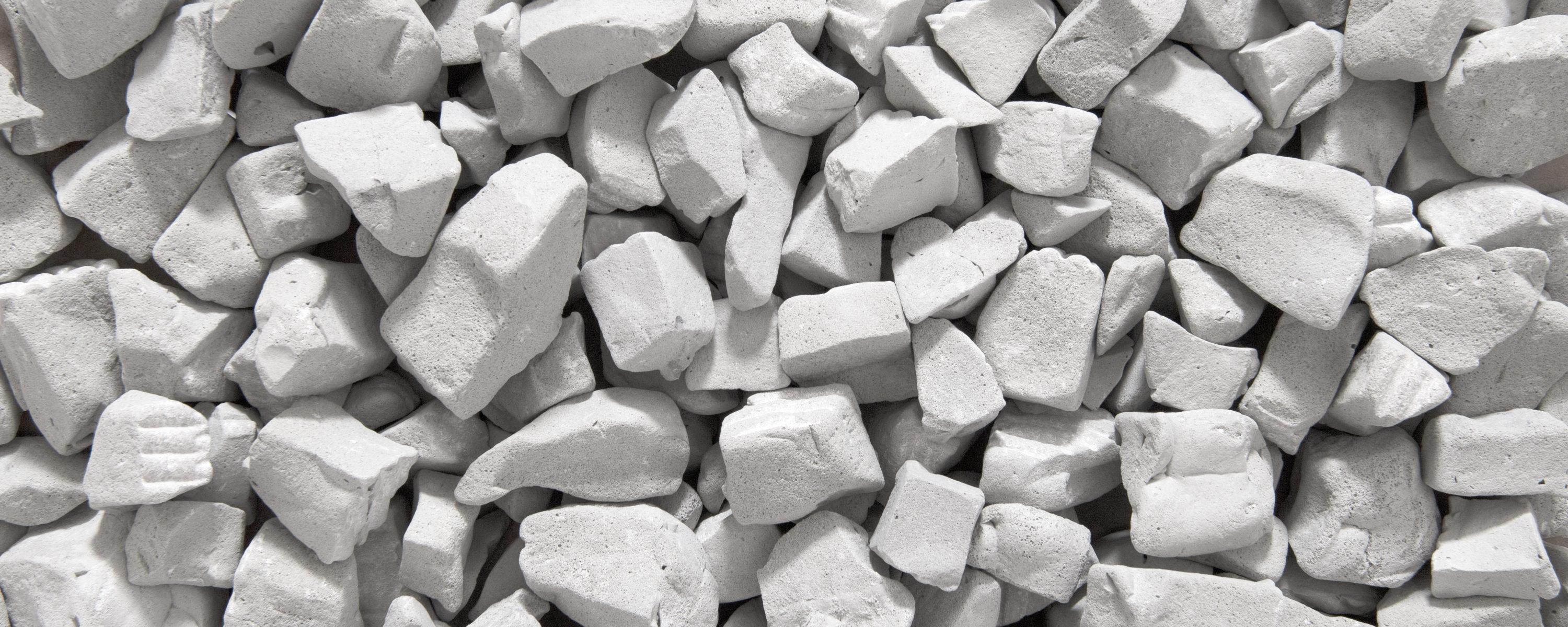Download Material safety data sheet [pdf]
Section 1: Identification of the substance/mixture and of the company/undertaking
Trade name / Substance name
Foamit foam glass aggregate
The uses of the chemical verbally
Bulk fill material, thermal insulation, under slab layer of limecrete floor,
frost heave protection, foundations, roof construction, capillary blocker,
garden construction, soil stabilser, traction sand, etc.
Supplier (manufacturer, importer, only representative, downstream user, distributor)
Uusioaines Oy
Edvartintie 3
31600 Jokioinen
Street address
PL 120
30101 Forssa
+358 3 4243 100
uusioaines@uusioaines.com
www.foamit.fi
Finnish Business ID (Y code): 0987205-9
Emergency telephone number
(Poison centre) 09 471 977 (24 hrs) or 112
Section 2: Hazards identification
Classification of the substance or mixture
The product is not classified as hazardous and is not subject to the labelling obligation in accordance with Regulation (EC) No. 1272/2008 (CLP).
Section 3: Composition / information on ingredients
Substances
| Main constituent / constituent | CAS-, EC- or index number | Concentration |
|---|---|---|
| Foam glass | 70010010 | 100% |
| Silicon dioxide (SiO₂) | <75% | |
| Sodium oxide (Na₂O) | <15% | |
| Calcium oxide (CaO) | <11% | |
| Magnesium oxide (MgO) | <5% | |
| Aluminium oxide (Al₂O₃) | <3% |
Section 4: First aid measures
Description of first aid measures
| Respiratory | Move in to the fresh air. Flush the throat and clean the nasal passageways. |
| Skin | Mechanical abrasion may cause irritation. Wash or rinse with water. |
| Eyes | Contact with the eyes may cause injuries to the eyes. Do not rub the eyes. Rinse the eyes with plenty of running water. Remove contact lenses if possible. If irritation persists after rinsing seek medical attention. |
| Ingestion | Seek immediate medical attention. |
Section 5: Firefighting measures
Extinguishing media
The product is not flammable. There are no limitations on the use of conventional fire extinguishing agents
Section 6: Accidental release measures
Varotoimenpiteet, henkilönsuojaimet ja menettely hätätilanteissa
Personal precautions. Produces dust when dry, in which case use the personal protective equipment outlined in section 8
Environmental precautions
The product is not toxic or hazardous to the environment.
Methods and material for containment and cleaning up
Clear up the material mechanically.
Section 7: Handling and storage
Precautions for safe handling
Avoid dust where possible. When working in dusty conditions, a respirator with a particulate filter (P2) must be used. Safety goggles are recommended. Use of safety gloves is recommended to avoid mechanical abrasion that may cause irritation.
Conditions for safe storage, including any incompatibilities
No special requirements, no incompatible materials.
Specific end use(s)
No special requirements.
Section 8: Exposure controls/personal protection
Control parameters
National occupational exposure limit values
Inorganic dust 8h HTP 10 mg/m3
Exposure controls
Appropriate engineering controls
Personal Protective Equipment and Protective Clothing
Eye / face protection
Pölyn ja roiskeiden silmiin joutumisen estämiseksi suositellaan suojalasien käyttöä kaikissa työvaiheissa.
Skin protection
Mechanical abrasion may cause irritation. Use appropriate work clothes.
Hand protection
Mechanical abrasion may cause irritation. Wear protective gloves.
Respiratory protection
Particulate respirator (P2) with particulate filter must be used throughout dusty stages of wor
Section 9: Physical and chemical properties
Information on cphysical and chemical properties
Appearance
Solid
Melting point/freezing point
Softening point approx. 700 ° C
Flammability (solid, gas)
Non-flammable
Relative density
Dry bulk density about 125 – 250 kg / m3
Other information
Particle size typically 0-60 mm
Section 10: Stability and reactivity
Chemical stability
Chemically stable
Section 11: Toxicological information
Skin corrosion/irritation
Mechanical abrasion can cause irritation.
Serious eye damage/irritation
Contact with eyes may cause eye injuries.
Section 12: Ecological information
–
Section 13: Disposal considerations
Waste treatment methods
Smaller contaminated items can be disposed of with normal mixed waste. Larger batches can be recovered and reused. The foam glass to be removed from use is classified as construction waste. It is delivered to a landfill. Before delivery to the landfill, the material must be approved in advance for placement in the landfill. Crushed foam glass mixed with soil cannot be taken to a landfill for soil.
Section 14: Transport information
–
Section 15: Regulatory information
–
Kohta 16: Other information
List of relevant R-and S-phrases or/and safety and precautionary statements
No safety nor precautionary statements.

 Contact us
Contact us